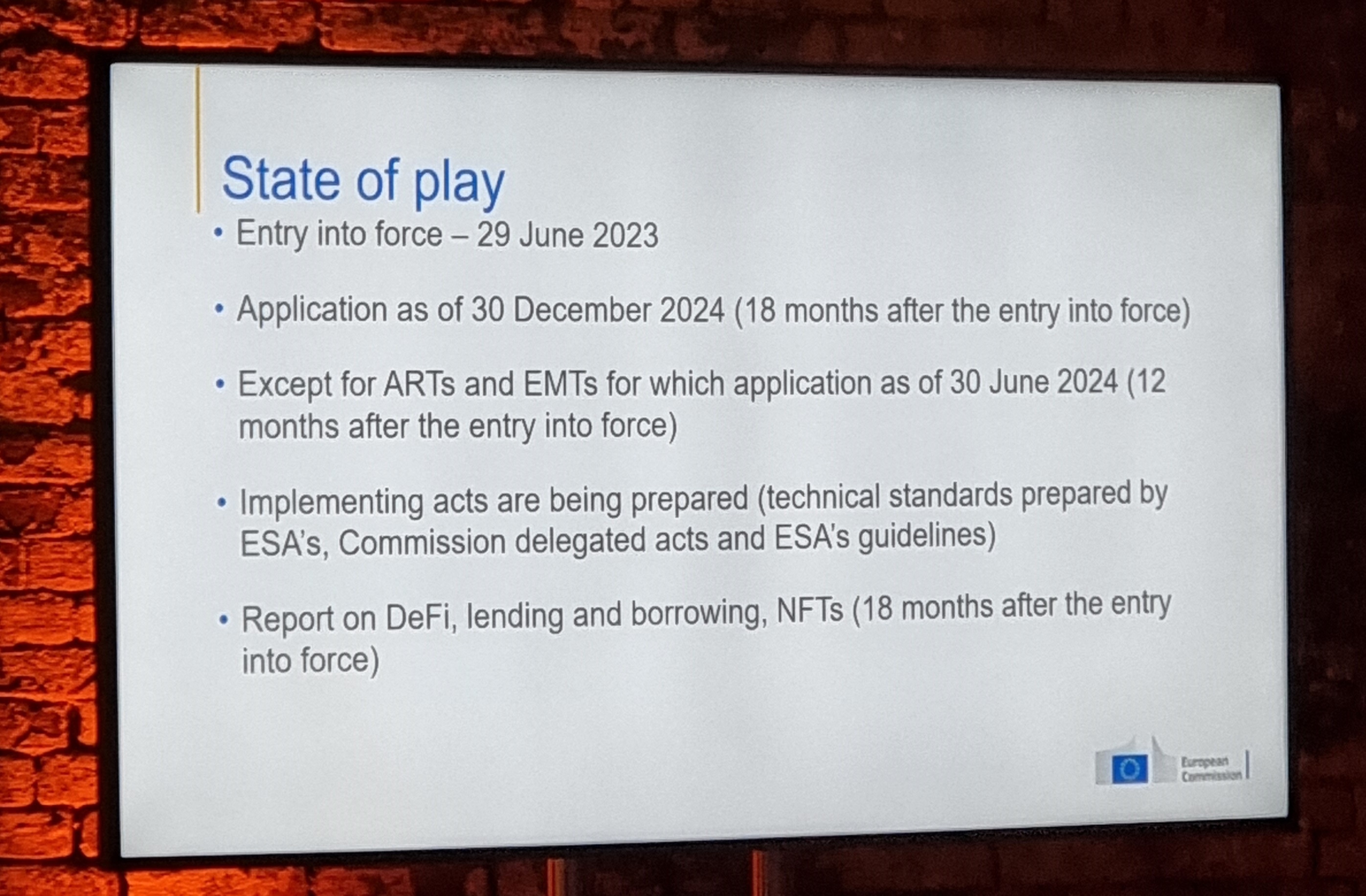
FTX collapse, Binance’s US settlement provide strong case for MiCA regulations

European Commission policy officer Ivan Keller highlights high-profile centralized exchange shortcomings as key reasons for the implementation of MiCA regulations in Europe.
The collapse of FTX in 2022 and Binance’s recent $4.3-billion settlement with United States authorities provide a strong argument for the provisions of the European Union’s Markets in Crypto-Assets (MiCA) legislation, a European Commission official said in an interview.
Ivan Keller, policy officer for the European Commission, spoke to Cointelegraph at the MoneyLIVE conference in Amsterdam. News of Binance’s high-profile settlement with the U.S. Department of Justice (DOJ) broke the night before Keller’s keynote and served as a pertinent reflection point for MiCA’s full-scale application in 2024.
“I think we’ve had several unfortunate confirmations that kind of go down that path of robust regulation. FTX was definitely one of the big ones, and now recently with Binance,” Keller explained.
“Our position is that this rule book would mitigate some of the risks and, importantly, give regulators more clear-cut levers and powers supervising these entities so they can also mitigate those risks.”
The policy officer also gave an updated view of the path toward MiCA’s full application across the European Union. Hailed as one of the first comprehensive cryptocurrency legal frameworks globally, the regulations set out by MiCA will apply to all EU member states.
Keller stressed that MiCA’s objective is to promote innovation while addressing the risks to consumers, market integrity, financial stability and monetary sovereignty. The scope of the regulations applies to issuers of crypto assets and crypto asset service providers and aims to tackle market abuse.
MiCA entered into force in June 2023, but the application of rules governing “asset-referenced tokens” and “e-money tokens,” which largely fall under the umbrella of stablecoins, is expected to take effect in June 2024.
After that, rules for “crypto-asset service providers,” which include trading platforms, wallet providers, and cryptocurrency exchanges and services, will take effect in December 2024.

Keller added that the European Securities and Markets Authority and European Banking Authority are drafting several technical standards covering a broad scope of considerations.
“There’s around 40 technical standards that are being drafted now. They already consulted the public on a good part of them, and that’s still ongoing. They will then finalize that and then send it to the commission as a draft,” Keller explained.
The commission will then receive finalized standards as a draft, which will need to be adopted into internal procedures. Co-legislators, parliament and the European Council will have a scrutiny period of two months.
“Hopefully, that will be finished before MiCA ‘level one,’ which is this phase for stablecoins, kicks into effect in June 2024.”
Keller also said that cryptocurrency service providers have been given ample time to digest the expectations laid out through the MiCA consultation process.
“It’s been a good 18 months since the text was negotiated. The proposal has been out for a lot of time, and a lot of these things are also kind of borrowed from the traditional rule book,” Keller said.
He added that a “grandfathering clause” in MiCA allows CASPs to continue operating under the applicable national rules of EU member states over a supplemental period. However, these operators would not be able to “passport” services across the European Union.
Magazine: This is your brain on crypto: Substance abuse grows among crypto traders
Go to Source
Author: Gareth Jenkinson









